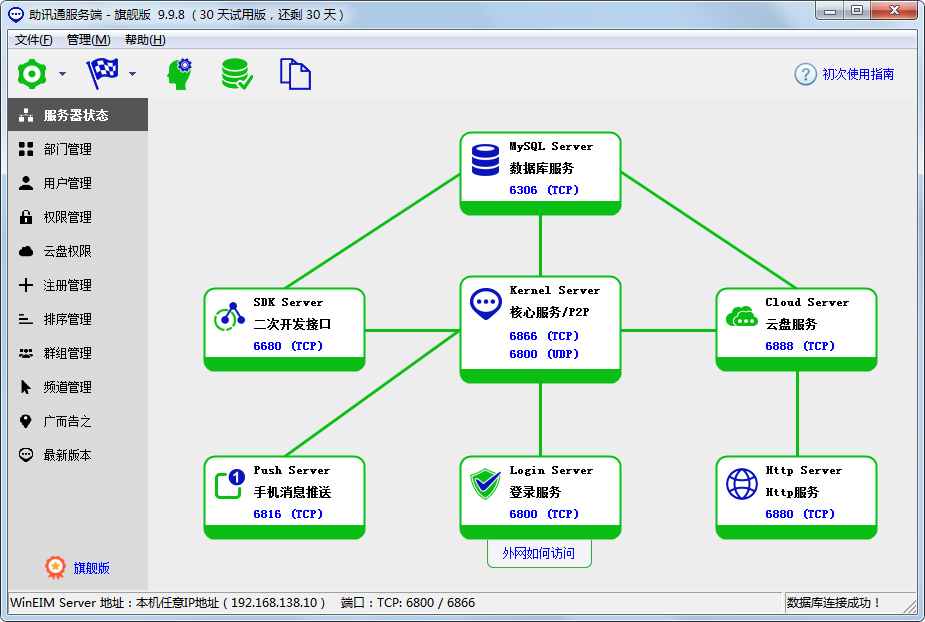linux有没有内核文件操作函数
时间:2023-05-20 20:22
linux有内核文件操作函数,例filp_open()函数可用于打开文件、vfs_read()函数可用于读取文件、vfs_write()函数可用于写文件、filp_close()函数可用于关闭文件。在vfs_read和vfs_write函数中,其第二个参数指向的用户空间的内存地址,如果直接使用内核空间的指针,则会返回“-EFALUT”。 1. 内核空间文件操作 2. 内核空间与用户空间 在vfs_read和vfs_write函数中,其参数buf指向的用户空间的内存地址,如果我们直接使用内核空间的指针,则会返回-EFALUT。这是因为使用的缓冲区超过了用户空间的地址范围。一般系统调用会要求你使用的缓冲区不能在内核区。这个可以用 在 如果使用,如下: 详尽解释:系统调用本来是提供给用户空间的程序访问的,所以,对传递给它的参数(比如上面的buf),它默认会认为来自用户空间,在read或write()函数中,为了保护内核空间,一般会用 3.Linux struct inode结构 4.Linux struct file结构 在系统内核空间中,每个打开的文件都有一个对应的struct file。当打开文件并进行操作时,内核会创建一个该文件的描述符,并将其传递给相关的函数。在文件的所有实例都关闭后,内核释放这个数据结构。通常在内核创建和驱动源码中,指向struct file的指针被命名为file或filp。 以上就是linux有没有内核文件操作函数的详细内容,更多请关注Gxl网其它相关文章!功能 函数原型 打开文件 struct file *filp_open(const char *filename, int flags, int mode) 读文件 ssize_t vfs_read(struct file *file, char __user *buf, size_t count, loff_t *pos) 写文件 ssize_t vfs_write(struct file *file, const char __user *buf, size_t count, loff_t *pos) 关闭文件 int filp_close(struct file *filp, fl_owner_t id) set_fs()、get_fs()来解决。include/asm/uaccess.h中,有如下定义:#define MAKE_MM_SEG(s) ((mm_segment_t) { (s) })#define KERNEL_DS MAKE_MM_SEG(0xFFFFFFFF)#define USER_DS MAKE_MM_SEG(PAGE_OFFSET)#define get_ds() (KERNEL_DS)#define get_fs() (current->addr_limit)#define set_fs(x) (current->addr_limit = (x))mm_segment_t fs = get_fs();set_fs(KERNEL_FS);//vfs_write();vfs_read();set_fs(fs);
get_fs()得到的值来和USER_DS进行比较,从而防止用户空间程序“蓄意”破坏内核空间;而现在要在内核空间使用系统调用,此时传递给read或write()的参数地址就是内核空间的地址了,在USER_DS之上(USER_DS ~ KERNEL_DS),如果不做任何其它处理,在write()函数中,会认为该地址超过了USER_DS范围,所以会认为是用户空间的“蓄意破坏”,从而不允许进一步的执行;为了解决这个问题set_fs(KERNEL_DS)将其能访问的空间限制扩大到KERNEL_DS,这样就可以在内核顺利使用系统调用了!/*索引节点对象由inode结构体表示,定义文件在linux/fs.h中*/struct inode { struct hlist_node i_hash; /* 哈希表 */ struct list_head i_list; /* 索引节点链表 */ struct list_head i_dentry; /* 目录项链表 */ unsigned long i_ino; /* 节点号 */ atomic_t i_count; /* 引用记数 */ umode_t i_mode; /* 访问权限控制 */ unsigned int i_nlink; /* 硬链接数 */ uid_t i_uid; /* 使用者id */ gid_t i_gid; /* 使用者id组 */ kdev_t i_rdev; /* 实设备标识符 */ loff_t i_size; /* 以字节为单位的文件大小 */ struct timespec i_atime; /* 最后访问时间 */ struct timespec i_mtime; /* 最后修改(modify)时间 */ struct timespec i_ctime; /* 最后改变(change)时间 */ unsigned int i_blkbits; /* 以位为单位的块大小 */ unsigned long i_blksize; /* 以字节为单位的块大小 */ unsigned long i_version; /* 版本号 */ unsigned long i_blocks; /* 文件的块数 */ unsigned short i_bytes; /* 使用的字节数 */ spinlock_t i_lock; /* 自旋锁 */ struct rw_semaphore i_alloc_sem; /* 索引节点信号量 */ struct inode_operations *i_op; /* 索引节点操作表 */ struct file_operations *i_fop; /* 默认的索引节点操作 */ struct super_block *i_sb; /* 相关的超级块 */ struct file_lock *i_flock; /* 文件锁链表 */ struct address_space *i_mapping; /* 相关的地址映射 */ struct address_space i_data; /* 设备地址映射 */ struct dquot *i_dquot[MAXQUOTAS]; /* 节点的磁盘限额 */ struct list_head i_devices; /* 块设备链表 */ struct pipe_inode_info *i_pipe; /* 管道信息 */ struct block_device *i_bdev; /* 块设备驱动 */ unsigned long i_dnotify_mask; /* 目录通知掩码 */ struct dnotify_struct *i_dnotify; /* 目录通知 */ unsigned long i_state; /* 状态标志 */ unsigned long dirtied_when; /* 首次修改时间 */ unsigned int i_flags; /* 文件系统标志 */ unsigned char i_sock; /* 可能是个套接字吧 */ atomic_t i_writecount; /* 写者记数 */ void *i_security; /* 安全模块 */ __u32 i_generation; /* 索引节点版本号 */ union { void *generic_ip; /* 文件特殊信息 */ } u;};/**索引节点的操作inode_operations定义在linux/fs.h中*/struct inode_operations { int (*create) (struct inode *, struct dentry *,int); /*VFS通过系统调用create()和open()来调用该函数,从而为dentry对象创建一个新的索引节点。在创建时使用mode制定初始模式*/ struct dentry * (*lookup) (struct inode *, struct dentry *); /*该韩式在特定目录中寻找索引节点,该索引节点要对应于dentry中给出的文件名*/ int (*link) (struct dentry *, struct inode *, struct dentry *); /*该函数被系统调用link()电泳,用来创建硬连接。硬链接名称由dentry参数指定,连接对象是dir目录中ld_dentry目录想所代表的文件*/ int (*unlink) (struct inode *, struct dentry *); /*该函数被系统调用unlink()调用,从目录dir中删除由目录项dentry制动的索引节点对象*/ int (*symlink) (struct inode *, struct dentry *, const char *); /*该函数被系统电泳symlik()调用,创建符号连接,该符号连接名称由symname指定,连接对象是dir目录中的dentry目录项*/ int (*mkdir) (struct inode *, struct dentry *, int); /*该函数被mkdir()调用,创建一个新鲁姆。创建时使用mode制定的初始模式*/ int (*rmdir) (struct inode *, struct dentry *); /*该函数被系统调用rmdir()调用,删除dir目录中的dentry目录项代表的文件*/ int (*mknod) (struct inode *, struct dentry *, int, dev_t); /*该函数被系统调用mknod()调用,创建特殊文件(设备文件、命名管道或套接字)。要创建的文件放在dir目录中,其目录项问dentry,关联的设备为rdev,初始权限由mode指定*/ int (*rename) (struct inode *, struct dentry *, struct inode *, struct dentry *); /*VFS调用该函数来移动文件。文件源路径在old_dir目录中,源文件由old_dentry目录项所指定,目标路径在new_dir目录中,目标文件由new_dentry指定*/ int (*readlink) (struct dentry *, char *, int); /*该函数被系统调用readlink()调用,拷贝数据到特定的缓冲buffer中。拷贝的数据来自dentry指定的符号链接,最大拷贝大小可达到buflen字节*/ int (*follow_link) (struct dentry *, struct nameidata *); /*该函数由VFS调用,从一个符号连接查找他指向的索引节点,由dentry指向的连接被解析*/ int (*put_link) (struct dentry *, struct nameidata *); /*在follow_link()调用之后,该函数由vfs调用进行清楚工作*/ void (*truncate) (struct inode *); /*该函数由VFS调用,修改文件的大小,在调用之前,索引节点的i_size项必须被设置成预期的大小*/ int (*permission) (struct inode *, int); /*该函数用来检查给低昂的inode所代表的文件是否允许特定的访问模式,如果允许特定的访问模式,返回0,否则返回负值的错误码。多数文件系统 都将此区域设置为null,使用VFS提供的通用方法进行检查,这种检查操作仅仅比较索引及诶但对象中的访问模式位是否和mask一致,比较复杂的系统, 比如支持访问控制链(ACL)的文件系统,需要使用特殊的permission()方法*/ int (*setattr) (struct dentry *, struct iattr *); /*该函数被notify_change调用,在修改索引节点之后,通知发生了改变事件*/ int (*getattr) (struct vfsmount *, struct dentry *, struct kstat *); /*在通知索引节点需要从磁盘中更新时,VFS会调用该函数*/ int (*setxattr) (struct dentry *, const char *, const void *, size_t, int); /*该函数由VFS调用,向dentry指定的文件设置扩展属性,属性名为name,值为value*/ ssize_t (*getxattr) (struct dentry *, const char *, void *, size_t); /*该函数被VFS调用,向value中拷贝给定文件的扩展属性name对应的数值*/ ssize_t (*listxattr) (struct dentry *, char *, size_t); /*该函数将特定文件所有属性别表拷贝到一个缓冲列表中*/ int (*removexattr) (struct dentry *, const char *); /*该函数从给定文件中删除指定的属性*/};
struct file结构体定义在/linux/include/linux/fs.h(Linux 2.6.11内核)中,其原型是:struct file { /* * fu_list becomes invalid after file_free is called and queued via * fu_rcuhead for RCU freeing */ union { struct list_head fu_list; struct rcu_head fu_rcuhead; } f_u; struct path f_path;#define f_dentry f_path.dentry#define f_vfsmnt f_path.mnt const struct file_operations *f_op; atomic_t f_count; unsigned int f_flags; mode_t f_mode; loff_t f_pos; struct fown_struct f_owner; unsigned int f_uid, f_gid; struct file_ra_state f_ra; unsigned long f_version;#ifdef CONFIG_SECURITY void *f_security;#endif /* needed for tty driver, and maybe others */ void *private_data;#ifdef CONFIG_EPOLL /* Used by fs/eventpoll.c to link all the hooks to this file */ struct list_head f_ep_links; spinlock_t f_ep_lock;#endif /* #ifdef CONFIG_EPOLL */ struct address_space *f_mapping;};



























